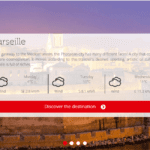
In a crowded fashion marketplace dominated by mass trends and fast fashion, Ssense stands out as a digital oasis for the discerning, the curious, and the style-forward. Known for its sleek aesthetic, cutting-edge editorials, and deep respect for craftsmanship, Ssense is more than just an online retailer—it’s a tastemaker. But what really goes on behind the curtain of this Montreal-based powerhouse? How are its coveted collections put together? And who decides what makes the cut? Let’s take a deep dive into the curation process that makes Ssense the go-to destination for global fashion connoisseurs.
The Ssense Philosophy: A Balance of Art and Commerce
From the outset, Ssense has never positioned itself as a traditional e-commerce platform. Instead, it operates at the intersection of culture, fashion, and technology. Founded in 2003 by brothers Rami, Firas, and Bassel Atallah, the platform set out to bridge luxury fashion and tech, offering a space that celebrates both emerging talent and established names.
The guiding philosophy behind Ssense’s curation is rooted in relevance, authenticity, and future-thinking design. Rather than simply stocking brands based on popularity or trend data, Ssense invests in narratives—whether that’s the heritage of a legacy house or the rebellious ethos of a new streetwear label. Every piece, every collection, and every drop is carefully considered for how it contributes to the broader cultural conversation.
The Buying Team: Tastemakers Behind the Curtain
At the heart of Ssense’s curated collections is its elite buying team—a group of individuals with deep industry knowledge and an eye for innovation. These buyers attend fashion weeks across the globe, from Paris to Seoul, not just to see runway shows but to get a sense of the mood shaping each season.
They build relationships with designers, walk through showrooms, and often scout talent long before the rest of the industry takes notice. Their role isn’t simply to select what looks good on the runway. They assess fit, fabric quality, storytelling, and how a brand aligns with Ssense’s evolving identity.
According to insiders, the buyers lean into risk-taking. It’s not unusual for them to champion a new label with just a handful of lookbook images or to invest heavily in a subversive collection that bucks conventional trends. That sense of boldness, coupled with data-driven insight into customer behavior, keeps Ssense ahead of the curve.
Brand Curation: From the Iconic to the Independent
Ssense is home to over 700 brands—but don’t let the number fool you. Each one serves a purpose in telling the broader story of contemporary fashion. The mix is eclectic yet intentional, encompassing everything from avant-garde designers like Rick Owens and Yohji Yamamoto to emerging names like ERL and Ottolinger.
The platform also excels at showcasing unexpected pairings. A user might find Prada loafers listed beside an under-the-radar Scandinavian label or discover that their favorite streetwear hoodie is part of a limited capsule collection curated in collaboration with a digital artist.
The diversity extends beyond just aesthetics—it’s about cultural relevance. Ssense champions LGBTQ+ designers, Black-owned brands, and genderless fashion labels, ensuring that its curation reflects a broad and inclusive vision of fashion’s future.
Exclusive Capsules and Collaborations
One of the most exciting aspects of shopping at Ssense is its lineup of exclusive collections and collaborations. These capsules are the result of months—sometimes years—of close partnerships between Ssense’s creative team and the brands themselves.
From limited-edition sneakers to fully reimagined seasonal collections, these collaborations are designed to offer something fresh, collectible, and aligned with Ssense’s distinctive point of view. Notable past exclusives include projects with Marine Serre, A-COLD-WALL*, and Jacquemus.
These initiatives often blur the line between retail and editorial, with accompanying photo shoots, video campaigns, and in-depth interviews that contextualize the product within a larger cultural framework.
The Role of Data and Tech in Curation
Though Ssense thrives on creativity, its success is also fueled by rigorous data analysis. The brand has developed proprietary tools to monitor customer behavior, emerging search patterns, and social trends. This information helps inform not only what brands to buy, but how much inventory to invest in, which pieces to feature on the homepage, and what styling themes to highlight in editorial content.
What makes Ssense unique is its ability to marry this data-driven approach with human intuition. While algorithms might identify growing interest in a particular silhouette or fabric, it’s still the buying and editorial teams who determine how to frame that trend in a meaningful way.
The result? A seamless experience where shoppers feel both understood and inspired.
Editorial Meets E-Commerce
One of Ssense’s most defining characteristics is its high-impact editorial platform. The content doesn’t just exist alongside the shopping experience—it enhances and elevates it. Readers can dive into long-form features on underground subcultures, profiles of experimental musicians, or philosophical essays on the future of fashion—all while having the option to shop the looks being discussed.
This convergence of journalism and commerce is deliberate. Ssense doesn’t just want to sell clothes; it wants to create a world around them. Its editorial team works closely with stylists, photographers, and writers to produce content that challenges the norm and deepens the customer’s engagement with fashion.
In many cases, the editorial features are tightly interwoven with the curated collections. A spotlight on the resurgence of brutalist minimalism, for example, might coincide with the launch of a new drop from The Row or Jil Sander. It’s this thoughtful integration that sets Ssense apart from more transactional retail platforms.
Sustainability and Responsibility in Selection
As the fashion industry reckons with its environmental impact, Ssense has taken steps to incorporate sustainability into its curation model. The company is transparent about the complexities of sustainable fashion and avoids greenwashing. Instead, it focuses on supporting designers who are making genuine strides in areas like ethical production, upcycled materials, and carbon footprint reduction.
Brands such as Collina Strada, Phipps, and Bode are key examples of this commitment. Ssense also hosts a dedicated “Conscious Edit,” highlighting products and labels that prioritize sustainability and responsible practices.
Moreover, Ssense isn’t afraid to use its platform to spark larger conversations about fashion’s role in climate change, labor rights, and the digital future of consumption. Its curated collections often include not just pieces to wear, but ideas to consider.
The Customer Connection: Personalization and Discovery
Despite its scale, Ssense maintains an almost boutique-like feel, thanks in part to its focus on personalization. The platform uses machine learning to tailor product recommendations, styling suggestions, and editorial features to each individual shopper’s tastes.
But there’s also an emphasis on discovery. Ssense designs its digital experience to encourage exploration—whether that’s stumbling upon a brand you’ve never heard of, uncovering a niche accessory, or falling down a rabbit hole of editorial content. It feels less like a store and more like a curated gallery of global style.
Looking Ahead: The Future of Curation at Ssense
As Ssense continues to expand its reach—from digital-first drops to possible future retail experiences—it remains committed to redefining what curated fashion can look like in the 21st century. In an era where style is increasingly democratized, and trends are born overnight, Ssense offers something rare: a point of view.
What’s next for Ssense? Insiders suggest that the brand is doubling down on experiential shopping, AI-assisted styling, and immersive content that blurs the line between real and virtual fashion. But no matter how the platform evolves, its core approach to curation—artful, thoughtful, and culturally in tune—will likely remain its North Star.
Conclusion
Behind every sleek interface and beautifully shot lookbook on Ssense lies a meticulous, creative, and deeply intentional process. From the buyers who travel the world to scout designers, to the editors who contextualize the collections with bold storytelling, Ssense is redefining what it means to curate in the digital age. It’s not just about selling clothes—it’s about shaping culture, one collection at a time.






















